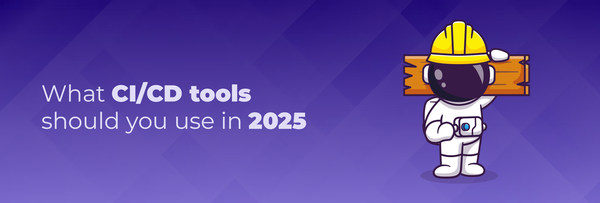A Playbook for Doing Effective Code Reviews

Code reviews are the backbone of high-quality code, but let’s face it—they can also be a major speed bump, slowing down development and creating frustration.
How can your team balance thoroughness with efficiency, ensuring that code reviews don’t become a drag?
In this blog, we tackle that very challenge head-on.
Discover actionable examples and code review best practices that are tailor-made for tech teams.
We’ll also spotlight top tools and strategies to supercharge your workflow.
Get ready to revolutionize your development cycle and say goodbye to bottlenecks!
Pre-requisites for Code Reviews
- Adopt a Branching Strategy That Works
A well-defined branching strategy is critical for maintaining a clean and organized codebase.
By managing your code through different branches, you can prevent conflicts, track changes, and streamline collaboration.
This organization is vital for ensuring that code review guidelines are efficient and effective.
We recommend adopting the Git branching strategy advocated by Microsoft Azure, which focuses on a hierarchical approach.
This strategy allows your team to manage development, feature, and release branches systematically, reducing the likelihood of errors and making rollbacks easier if something goes wrong.
- Perfect Your Code with Clear Commit Guidelines
Regular and descriptive commits are essential for an efficient code review process.
By committing frequently, you ensure that changes are manageable and easy for reviewers to digest.
Descriptive commit messages provide context, making it clear what changes were made and why.
To maintain consistency, consider using the Conventional Commits standard.
This structured format helps you keep commit messages uniform and readable, which is particularly helpful when generating changelogs or automating other tasks based on commit history.
- Get Ahead with Proactive Due Diligence
Before submitting your code for review, it's crucial to ensure it adheres to your team's coding standards and passes all necessary checks.
This practice not only saves time for reviewers but also ensures that your code is of high quality from the start.
- Linting and Formatting
Ensure that your code passes all linting checks using review tools like ESLint, PyChecker, or Prettier.
Set up pre-commit hooks to automate these checks, so your code consistently meets the team's standards.
- Testing
Run all local tests and consider automating these tests with pre-commit hooks.
Adopting Test-Driven Development (TDD) helps maintain high test coverage and ensures that your code is robust and reliable.
- Extend Tests
Depending on your changes, extend existing tests or write new ones to cover new functionality.
This step is crucial for preventing regressions and maintaining the integrity of your codebase.
By following these prerequisites, your team can make code reviews more focused, productive, and effective, leading to better code quality and smoother collaboration.
Automation Pipelines: Elevating Code Quality
In the fast-paced world of software development, maintaining high code quality while managing complex codebases can be a challenge.
Automation pipelines are a game-changer in this regard, helping tech teams streamline their workflow and ensure robust, error-free code.
Here’s how automation pipelines can enhance your code quality:
- Automated Tests on Pull Requests
Setting up Continuous Integration/Continuous Deployment (CI/CD) pipelines to run automated tests on new pull requests is essential for catching issues early.
By automating the testing process, you can ensure that every change made to the codebase is thoroughly vetted before merging.
This helps identify potential problems and prevent them from reaching the main branch.
- Essential Tools for Code Quality Checks
To maximize the effectiveness of your automated tests, leveraging tools like Code Climate and DangerJS can be incredibly beneficial.
Code Climate analyzes code quality by assessing readability, maintainability, and potential technical debt.
DangerJS, on the other hand, integrates seamlessly with your pull requests to flag issues related to code logic and structure.
These tools also provide valuable security checks, helping to identify vulnerabilities and ensuring that your code adheres to best practices.
- Simplifying Code Reviews
Automation isn’t just about catching errors—it also simplifies the code review process.
By integrating automated checks into your pipelines, you allow code reviewers to focus on higher-level concerns and architectural decisions rather than getting bogged down in nitty-gritty details.
This leads to more efficient and effective reviews, ultimately enhancing the overall quality of your codebase.
Incorporating automated pipelines and quality checks into your development workflow not only boosts code quality but also makes the development process more agile and scalable.
Adopt these practices to enhance your codebase, streamline reviews, and maintain a high standard of quality throughout your development cycle.
Code Review Best Practices
To make the process smoother and more productive, here are a few practical tips that would help you take your review game up:
- Live Reviews for High-Priority Tasks
For urgent matters, such as critical bug fixes, consider conducting live code reviews.
Walk through the code with the reviewer on a call, addressing any questions in real-time.
This method provides immediate feedback and speeds up the resolution process, making it ideal for time-sensitive tasks.
- Block Time Specifically for Code Reviews
Set aside dedicated time on your calendar for code reviews.
This ensures focused attention and consistent feedback, helping to avoid delays in feature delivery or merging pull requests.
By making reviews a regular part of your routine, you'll foster a culture of timely evaluations across your team.
- Settle Coding Disagreements with a Style Guide
Don't waste time on avoidable style debates like whether to use tabs or spaces.
Adopt a team-wide style guide that resolves these discussions upfront.
If you're unsure where to start, Google offers well-established style guides for various languages.
You can also create your own if needed, tailoring it to your team's preferences.
- Automate the Repetitive Stuff
Let computers handle the tedious aspects of your review.
Using tools like linters and formatters can automatically detect whitespace issues, sort imports, or flag unused variables.
These tools help create a faster feedback loop, and when combined with continuous integration (CI) solutions, they compile code and run tests without manual intervention.
- Give Feedback as Suggestions, Not Directives
Approach code review feedback as requests rather than commands. This maintains a collaborative atmosphere and reduces defensiveness.
For example, instead of saying, “This function is wrong,” try framing it as, “Could you simplify this function for clarity?”
The softer approach makes feedback more constructive and encourages better collaboration.
- Use Code Examples to Clarify Suggestions
When time is tight, clear examples can help the author understand your feedback quickly.
Including snippets of alternative code not only explains your point but also builds trust between the reviewer and author. It shows you’re offering help, not just blocking progress.
By implementing these practices, you'll improve the quality of your code reviews, reduce unnecessary delays, and foster a positive, efficient development environment.
- Aim to Improve Code by One or Two-Letter Grades
A helpful way to approach reviews is to aim for improvement rather than perfection.
Consider creating a grading rubric to assess code quality, and focus on bringing the code up by a letter grade or two.
This approach encourages iterative improvement, making the review process less overwhelming and more productive.
With these tips, you’ll transform code reviews into a constructive process that not only refines your code quality but also works toward building a healthier team rapport.
FAQs
- What is a code review and why is it important?
Wondering what is a code review?
A code review is a process in software development where developers systematically review each other’s code to identify errors, inconsistencies, and deviations from requirements.
This practice is important because it helps ensure code quality, catch potential issues early, and maintain alignment with current standards and practices.
Regular code reviews enhance collaboration, improve code reliability, and prevent integration problems that could arise from unchecked errors.
- What are the key guidelines for conducting an effective peer code review?
Here’s how you can conduct effective peer code reviews:
- Limit Code Size: Review 200-400 lines of code per session. This range balances thoroughness with the ability to catch defects effectively.
- Pace Your Review: Aim to inspect fewer than 500 lines of code per hour to maintain high defect detection rates.
- Time Management: Conduct reviews in sessions no longer than 60 minutes to avoid diminishing returns and maintain focus.
- Set Goals and Metrics: Establish clear, measurable goals for code reviews, such as reducing defects or support calls, and track performance using relevant metrics.
- Annotate Code: Authors should add annotations to guide reviewers and clarify changes, which can also help identify errors before the review.
- Use Checklists: Implement checklists to prevent common mistakes and omissions, providing clear expectations and improving consistency.
- Fix Defects Systematically: Develop a process for tracking and addressing defects discovered during reviews, ideally using collaborative tools.
- Foster a Positive Culture: Create a supportive environment where peer reviews are seen as opportunities for growth rather than criticism.
- Leverage the Ego Effect: The awareness of peer scrutiny can encourage developers to produce higher-quality code.
- Adopt Lightweight Reviews: Utilize efficient, tool-assisted methods for code reviews to save time while maintaining effectiveness.
- How can collaborative code review software enhance the code review process?
Collaborative code review software enhances the code review process by streamlining communication, automating feedback collection, and tracking defects efficiently.
It facilitates real-time discussions, ensures comprehensive logging of issues, and integrates with other development tools, leading to faster and more effective reviews.




